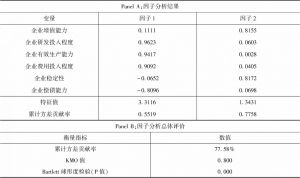论文
制造业战略转型背景下供应链关系对企业战略变化的影响
摘要
本文实证研究了供应链关系对我国制造业企业战略变化的影响。研究结果表明,较好的供应链关系能够提高我国制造业企业进行初创性、设计性与管理性战略变化的幅度。进一步地,本文研究了在面对外部环境差异与内部资源差异时供应链关系对战略变化影响的异同,以及供应商关系与客户关系分别对战略变化的影响。研究发现,外部环境差异与内部资源差异均会影响供应链关系与战略变化的相关性,并且客户关系与供应商关系对战略变化的影响也有不同。本文研究结果有助于深入理解企业战略变化的过程,并对我国制造业企业如何通过供应链关系来推动战略变化的实施有一定参考价值。
检索正文关键字
论文目录
- 一、引言
-
二、文献综述
- (一)战略变化
- (二)供应链关系
- (三)文献述评
-
三、理论分析与假设提出
- (一)供应链关系与战略目标的变化
- (二)供应链关系与战略实施手段的变化
- 1.供应链关系与设计性战略变化
- 2.供应链关系与管理性战略变化
-
四、研究设计
- (一)样本选择和数据来源
- (二)关键变量定义
- 1.战略目标变化:初创性战略变化(SC1)
- 2.战略实施手段变化:设计性战略变化(SC2)与管理性战略变化(SC3)
- 3.供应链关系
- (三)模型设计
-
五、实证结果与分析
- (一)描述性统计分析
- (二)供应链关系与战略变化关系的检验
- (三)进一步研究
- 1.外部环境与内部资源的影响
- 2.供应商关系与客户关系分别对战略变化的影响
- (四)稳健性检验
- 1.Heckman两步法
- 2.战略变化替代变量
- 六、研究结论与启示
相关文献
查看更多>>>









